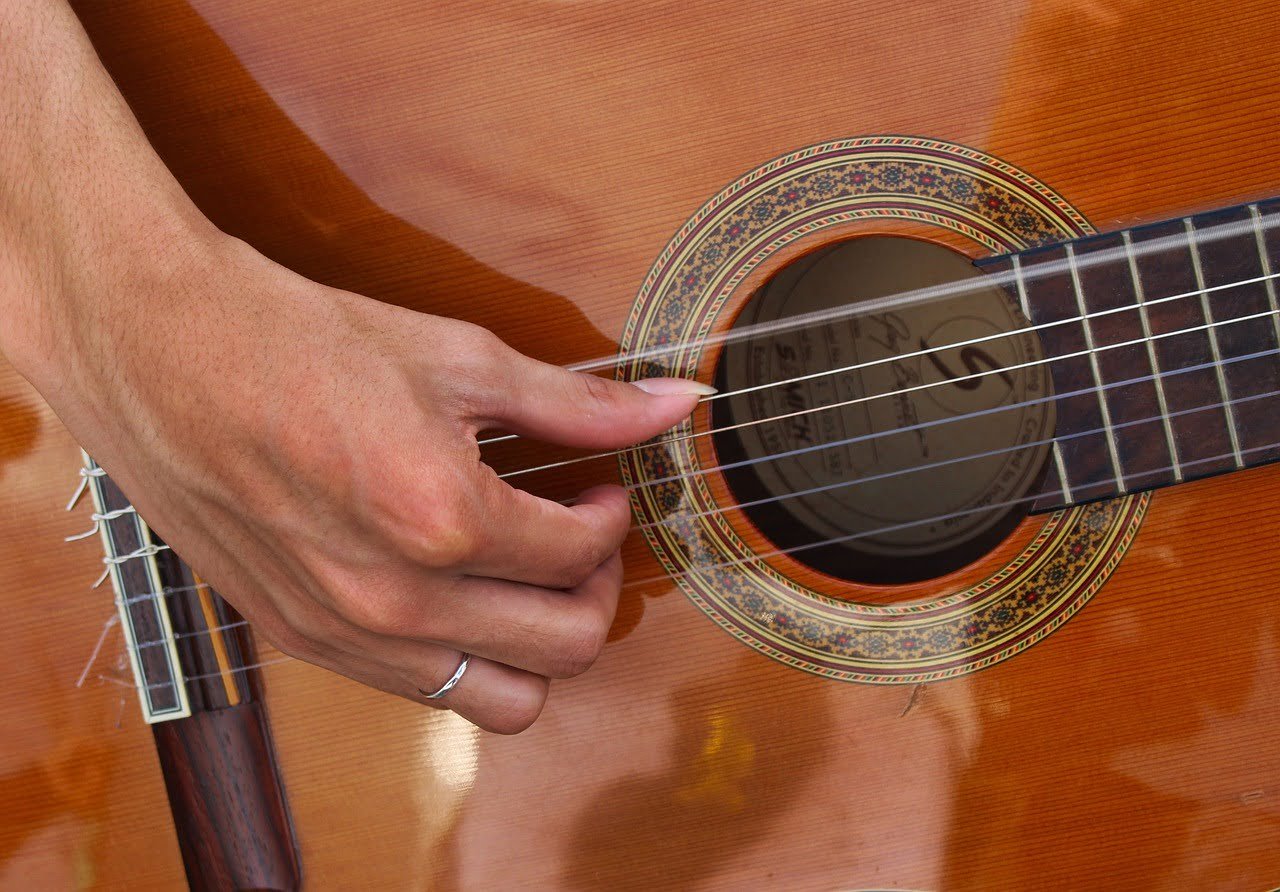You can only call yourself a classical guitarist if you can play some classical guitar pieces like Lagrima. If you are ready to up your guitar skills, you have come to the right place.
Lagrima is a classical guitar piece originally written by Francisco Tarrega, who was one of the notable classical guitarists and composers during the Romantic era. This wonderful piece is known for its expressive melody, emotional depth, and delicate arpeggios. The Lagrima guitar tab is a stunning representation of the composer’s unique style. Most importantly, it showcases a classical guitar’s lyrical qualities.
Understanding the Guitar Tab
To play Lagrima effectively, you must first familiarize yourself with what a guitar tab notation is.
The guitar tab gives a visual representation of the correct positioning of your fingers on the fretboard. Every line represents a string, and the numbers of these lines indicate the fret you should play.
Top Tips for Mastering Lagrima
Find the right fingerings
To help identify the best fingerings that work right away, begin playing Lagrima at a speed that is close to its intended tempo.
The fingerings must be musically accurate. And at the same time, they must feel natural, allowing you to play at full speed.
Slow down your tempo
Once you get a good grasp of the initial fingerings, slow down the tempo. Don’t get tempted to play the guitar piece too fast – slowing down your tempo will make your learning easier and faster.
Your goal at this stage is to develop your preferred fingerings and make sure that you can control them. Playing slowly will allow you to focus on precision and accuracy. And this can become your solid foundation for playing Lagrima and other classical guitar pieces faster.
Take control
Whenever you play, make sure that there are no mistakes. Give your brain accurate information from the beginning to instil correct playing habits.
Learn every note carefully from the start, as this will save you from going back and correcting mistakes later on. Develop the habit of playing the notes cleanly and minimizing mistakes.
Repeat doing only what’s right.
Break it down into sections
Your brain can only process a limited capacity. Thus, you have to break down difficult passages into sections or smaller chunks of information. That way, you can focus on mastering each element individually and then integrate them later.
Make sure that each chunk has only about seven items, including shifts, notes, specific movements, and techniques.
Here are other tips when learning each section
Understand notes and musical marking. Know what each dot of ink represents and look up for any unfamiliar symbols and words. Having a clear comprehension of the musical elements will allow for more efficient practice.
Clap and count the rhythm aloud. Counting aloud will help train your brain to clearly understand the rhythm. Doing this might initially feel awkward, but counting aloud helps you play the piece accurately.
Practice each section with your right hand first, followed by your left hand. Practice the right hand alone first with open strings. Once you get a good grasp of the right-hand technique, you can only proceed to the left-hand technique. Be aware of any challenging fingerings that require more attention.
Play hands together. Play each section with your hands together in a steady rhythm. Start at a slow tempo and then increase the speed gradually as you become comfortable. Put emphasis on accuracy, musicality, dynamics, and expression to bring the guitar piece to life.
Practice with a metronome
Begin practising the sections at a tempo that will allow you to control each aspect of your playing. Consider playing each chunk 10 times perfectly in a row before increasing your tempo. Only then can you increase the speed with the metronome.
Note: Consistently play every section flawlessly before moving on to the next. A gradual progression in playing a piece of classical guitar music will build your accuracy and confidence.
Zoom out
If you are having a hard time focusing on problem areas, consider zooming out to look at the bigger picture. Work more on complicated passages, and do not waste your time on chunks that you already play well.
List down the areas that need more attention, and make sure to spend more time practising those. Optimizing your practice sessions will help you learn classical guitar pieces efficiently.
Additionally, you have two options when you are dealing with challenging fingerings:
- Spend more time practising the difficult fingerings so you can improve over time
- Adapt the fingering to find an easier approach to playing the passages while preserving their musical integrity
Your decision will greatly depend on your goals and which option feels comfortable and more manageable.
Practice as much as you can
The more time you commit to practice, the better you will become. Always aim for focused practices and dedicate your time and energy to your classical guitar playing. Remember, 30 minutes of focused practice is far more effective than two hours of distracted practice.
It may seem challenging to play a classical guitar at first, but much more if you like to play classical guitar songs. But as long as you have a better picture of how you want your music to sound, your fingers will find the best way to execute them. You’ll soon develop better finger dexterity to play barre chords and other advanced techniques.
Trust the learning process and practice with determination. Repetition is key. With consistent effort, you will gradually progress and play the whole piece in no time.

